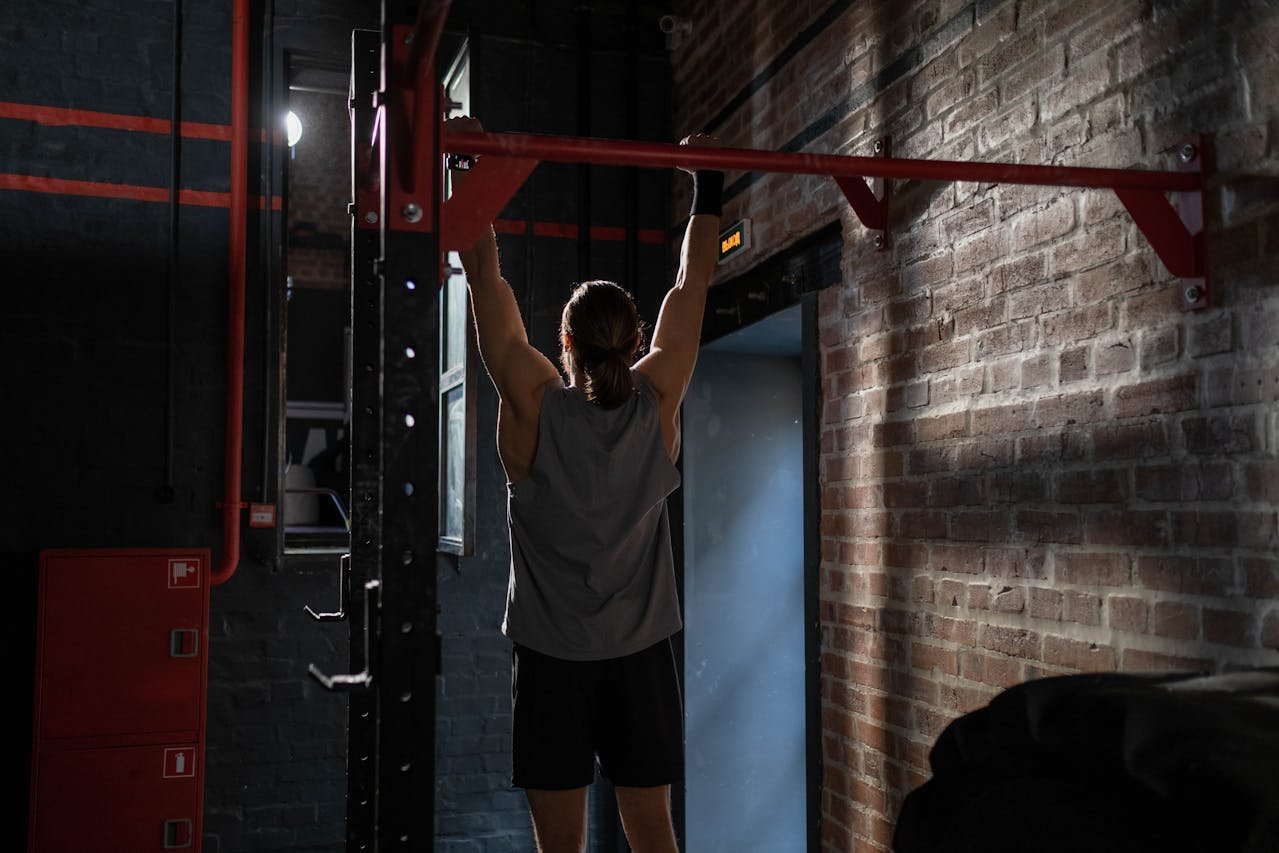As you know, pull-ups are an excellent exercise to work the muscles of the upper body. And they are not only highly effective at the bodybuilding level to do them you only need your weight and something to hold onto, such as the typical bars in the parks, those at the gym, or, if you prefer to train at home, your own. wall pull-up bars.
Still don’t know which muscles work? Keep reading! Here’s everything you need to know about the types of pull-ups and the muscles they work!
The main muscles that pull-ups work
If you search for work the upper body pull-ups are an exercise that cannot be missing from your routine. And, although they are a little complicated, especially at the beginning, you will be working with a single dynamic a lot of muscles at the same time, such as the latissimus dorsi, the biceps, the pectoralis, the trapezius, the rhomboids, the teres major muscle, the teres minor muscle and the infraspinatus, inter alia. Of course, depending on the type of pull-up you do, you will work some more than others, but generally, all of these are involved.
-
- The latissimus dorsi: This pulls the upper part of the spleens, bringing them closer to the body, and allowing it to rise to the bar.
-
- The biceps: This is the main muscle for lifting on the bar. You will notice that it works in conjunction with the dorsal, especially when you go down.
-
- The trapeze: here is the person in charge of supporting the load in the pull-ups.
-
- The deltoid: With this type of exercise, various muscles of the back are worked. In the case of the deltoid, you will notice a different activation depending on the type of grip you do.
-
- The pectoral: This is a great helper of the latissimus dorsi when you are going up in the pull-ups.
-
- The teres major, teres minor, and infraspinatus muscles: here are some of the great collaborators of the latissimus dorsi.
Types of pull-ups and muscles they work
Now that you know the general involvement of the different muscles, it is time to see what muscles are worked depending on the type of grip. However, remember! It is very important that always do more than one type when training and don’t always be left with a single option. Efficiency is in variety!
The main types of grip in pull-ups
When we talk about grips, in general, we can differentiate three main types:
-
- Overhand grip (pull-ups): The backs of the hands face towards you and the palms face outwards.
-
- Supine grip (chin-ups): The palms face you and the backs of the hands face outwards.
-
- Neutral grip: the hands do not look to one side or the other. It would be like stretching out your arms and grabbing the bars in that same position.
What muscles are involved in the different pull-ups
With the different types of grip, we get some muscles to intervene more than others. Hence the importance of varying our routine.
-
- Main muscles that work with the prone grip: the involvement of the latissimus dorsi, trapezius, and infraspinatus is greater compared to the supine grip.
-
- Main muscles that work with the supine grip: in this case, the pectoralis major, the biceps brachii, the spinal erectors, and the external oblique are activated more, compared to the previous one.
-
- Main muscles that work with the neutral grip: here the muscles of the prone and supine grip are activated, highlighting, above all, the activation of the pectoralis major, concerning the former.
Mistakes to avoid when doing pull-ups

Now that you know that success lies in variety and which muscles are activated in the different types, the time has come to reveal to you the Typical mistakes you should avoid when doing pull-ups to get the most out of your training and avoid injuries in the short and long term.
-
-
- Don’t use body momentum: To get the most out of pull-ups, you need to work the muscles in your arms and back. Falling into the temptation of jumping to reach the bar and swinging as a way of boosting yourself translates into wasting the work of muscles that are so important in pull-ups, such as the latissimus dorsi. But, if you notice that you are working! Yes, the abdomen and muscles of the lower body, which is not what interests you in pull-ups… although it is in kipping, which is what this variant is called.
-
- Control the downward movement and do not go down too quickly: Fatigue may want to sabotage your pull-ups by convincing you that it is not necessary to straighten your elbows and that you have already lowered enough when that is not true. Don’t pay attention to him! Stretch your elbows well in each repetition.
-
- Count only completed repetitions: ouch! Fatigue…don’t let it convince you that that incomplete repetition counts. For effective training, stick only to those that have been completed. Better few and well made than many and half-made.
-
- Don’t contract your shoulders too much: if you notice the shoulders, almost on the ears, be careful! The trapezius will be overloaded and you will begin to notice compensations that you were not looking for in your pull-ups.
-
Now that you know which muscles pull-ups work, are you already seeing progress in all of these muscles? If you haven’t incorporated pull-ups into your workouts yet, what are you waiting for? Share your experience!
Share this content:
